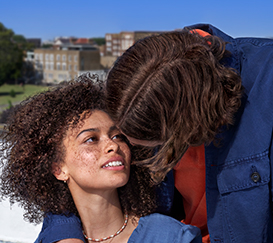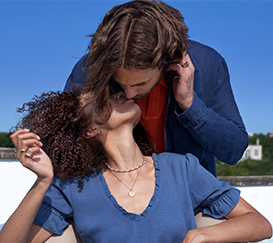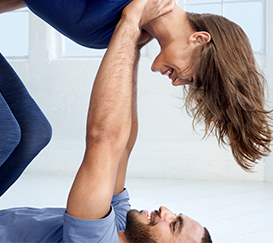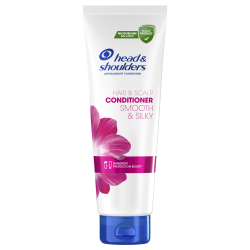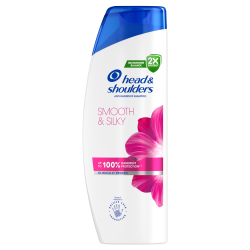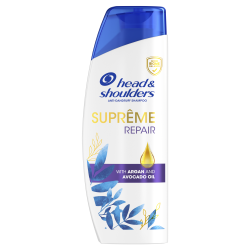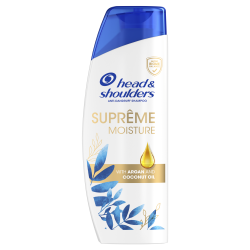Hair relaxer: what exactly is hair relaxing?
In this article:
Want to relax your natural curls into a straighter style? Allow us to guide you.
Naturally coiled or curled hair is beautiful, but sometimes it’s nice to change things up.
One of the ways to do this without constant upkeep is with a relaxer – a cream or lotion designed to permanently straighten hair.
Many people leave this sort of thing to their stylists, but it’s entirely possible to do it yourself at home.
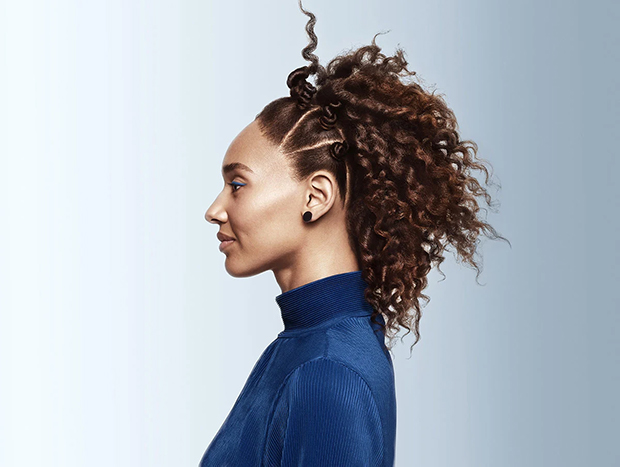
HOW RELAXERS WORK
Scientifically speaking, relaxers break the disulphide bonds that are found deep inside your hair fibres, reforming them while the hair is held straight; essentially, they work by reshaping your hair fibres directly.
This means they need to be pretty powerful, so it’s worth taking the time to use them properly.
HOW TO USE RELAXERS AT HOME
First off, make sure you’ve done an allergy test, including testing the relaxers both on your skin and on a couple of strands of your hair. This is to make sure there aren’t any adverse effects.
You’ll also want to make sure your scalp is in good shape – an already sensitive scalp can be subject to unpleasant burning if you’re not careful. If you have any scalp problems, deal with these first.
For instance, if you have dandruff, give yourself a couple of weeks on a good anti-dandruff shampoo and conditioner.
You’ll then want to take another week without washing your hair, to ensure that there’s no sensitive skin on your scalp.
This is because you’re more likely to experience an unpleasant burning sensation on sensitive areas of your scalp.
Once you’ve done this, you’ll want to protect your skin: use the protector included with your relaxer, or petroleum jelly, around your hairline, parting, ears and the back of your neck to do this. Make sure every exposed area of skin is covered.
Because each product is different, it’s important to make sure you follow the manufacturer’s instructions closely – this isn’t the place for experimentation.
Wear gloves throughout the process and pay close attention to the amount of time you spend applying the product and leave it on your hair.
You will usually need to combine two products (the cream and the activator) within your relaxing kit to produce the final mixture needed to relax your hair.
When you get around to using the relaxer, work in sections. This gives you better control and allows for more even coverage.
When it comes time to wash the relaxer out, be thorough: rinse out as much as possible first, before using a neutralizing shampoo.
This bit is important – you don’t want to leave any of those chemicals on your scalp.
The neutralizing shampoo will change colour (usually from pink to white) to indicate that all of the chemicals have been washed out of your hair. It will also return your hair to its natural pH.
Finally, a deep conditioner will help replace moisture that’s been lost during the process which will give you a head start back to healthy (and now straight) hair. Some relaxing kits include these, or you can purchase them separately.
THE PROBLEM WITH HAIR RELAXERS
The main problem with hair relaxers is that in order to straighten very curly hair, you need a strong chemical mixture that’s able to break down the cortex layer and change the texture of the hair.
In order to do this, these chemicals also have to be able to penetrate through the outer layer of cuticles protecting your hair.
The strength of these chemicals means that they can cause a host of problems including:
Hair dryness
Hair brittleness and breakage
Hair thinning
You also must be extremely careful to prevent scalp sensitivity, since the three main chemicals can be harsh on the skin.
Symptoms can include:
Stinging and discomfort
Skin redness
Temporary skin whiteness
Chemical burns

SMART TIPS TO HELP AVOID SCALP AND HAIR ISSUES
Any time you relax your hair you’re exposing yourself to potential problems. But by following some smart tips, you can help prevent scalp and hair issues:
Always follow the manufacturer’s usage instructions
Start with a healthy scalp: get rid of scalp issues like dry scalp and dandruff before using relaxers
Never use relaxer on freshly-washed hair: the natural oils help protect your scalp from chemical damage
Don’t relax sections of the hair that have already been straightened once (no overlap)
Avoid relaxer contact with the scalp- consider applying a protective base to the scalp as an extra barrier between the chemicals and your skin.
After using a relaxer, make sure that you wash your hair with a moisturising shampoo or co-wash. This is the first step to giving your hair and scalp the moisture they need, to keep them strong and looking beautiful.
CAN YOU USE RELAXERS IF YOU HAVE DANDRUFF?
Chemical relaxers can be a fantastic way for people with curly or coiled hair to get a straighter look. But if you have dandruff at the same time, they can spell disaster.
DANDRUFF AND RELAXERS
Dandruff is caused by skin sensitivity, from the Malassezia globosa microbe. It causes damage to the scalp that makes the skin weaker, so it’s less effective at keeping “good stuff” in (like moisture & nutrients), and keeping “bad stuff” out (like harmful chemicals).
While normally dandruff sensitivity is simple to treat, relaxers could make the problem much worse.
Chemical relaxers necessarily use strong chemicals to straighten stubborn curls. They do this by breaking protein bonds in the hair. The problem is that these chemicals are notorious for causing skin sensitivity.
If your skin is already weakened by dandruff, you could be even more vulnerable to reactions from relaxers.
Likewise, reactions from a relaxer could weaken your scalp, and make you more prone to dandruff. So, what’s the curly haired girl (or boy) to do?
FIRST THINGS FIRST
If you have both curly hair and dandruff, it’s important to get your priorities straight. That means tackling your dandruff before you try a relaxer.
A good dandruff shampoo, if used regularly, could get rid of the symptoms of dandruff in as little as two weeks.*
Once your head is clear of flakes and no longer itchy, you are ready to flaunt your straight hairstyle.
Just make sure you keep up the maintenance with a product designed to help keep your hair and scalp moisturized and better protected from the harsh relaxer chemicals.
* visible flakes


